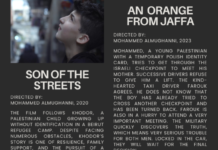Alex de Waal
The Guardian / November 15, 2024
Sudan is the largest food crisis and Gaza is the worst emergency by intensity of deprivation – both disasters need urgent action
I care about both Gaza and Sudan. It’s distasteful to compare extreme human suffering. But we can use the international metrics for famine to explain why each humanitarian crisis is uniquely terrible – and why people caught in both need urgent action.
Sudan is the largest food crisis in the world by the sheer numbers affected. The country’s warring generals can immediately end the worst hunger by agreeing to a ceasefire and facilitating humanitarian aid. But it’s a complicated, deep-rooted crisis that will take years to resolve.
Gaza is the worst food emergency by intensity of deprivation. There’s no case in recent decades that matches Gaza’s severity of starvation or speed of descent into such a state. Israel can stop starvation overnight by stopping its assault and facilitating essential aid.
The basis for comparison is the United Nations standardized system for measuring food insecurity and famines, the Integrated Food Security Phase Classification, or IPC. This was set up 15 years ago to help aid agencies and their donors assess humanitarian needs and direct relief assistance accordingly. When conditions get sufficiently bad, the IPC calls on the famine review committee – a kind of humanitarian supreme court – to make the final call.
As they unfold, food emergencies can be assessed by magnitude – the total numbers in need and total death toll. After the fact, famines can be measured by the total number who perished of hunger and the diseases that ravage malnourished children. Conventionally, 100,000 dead is called a “great famine”.
But we don’t want to count the graves of children before we call something a famine.
The UN assesses food crises, as they develop, by severity, meaning the proportion of people in any particular place who are acutely hungry. The IPC uses a five-level scale: normal, stressed, crisis, emergency and finally catastrophe (for families) or famine (for communities). It has a high threshold for determining “famine”, and tens of thousands of children may die from hunger at levels that aren’t severe enough to qualify as famine.
The IPC’s first famine review was on Somalia, in 2011. Since then, the famine review committee has met 20 times – about Ethiopia, Madagascar, Nigeria, Somalia, South Sudan and Yemen, as well as Gaza and Sudan. It has found “famine” three times, “famine with reasonable evidence” twice, projected imminent famine three times, and warned of “risk of famine” under worst-case scenarios seven times.
Convened to look at Sudan four months ago, the committee found “famine with reasonable evidence” in camps for displaced people near the city of al-Fashir in Darfur. But that tells a small part of a bigger story.
More than 25 million Sudanese people need humanitarian aid. About 8.5 million people there are in “emergency” and a further 755,000 in “catastrophe”. The next worse case on record is Yemen, where the numbers were 6.8 million in 2017 and 5.6 million in 2022.
It’s a sad but inescapable reality that hundreds of thousands will die from starvation in Sudan before the crisis is over.
Sudan’s famine is a slow-burn disaster dating back many years. An overlay of economic crisis, the legacy of past wars and mass displacement, and intermittent drought, with the depredations of a vicious war, brought about a complex disaster.
Before October last year, the IPC wasn’t active in Gaza. But within six weeks of Israel’s decision to impose a siege and launch massive military operations, in response to Hamas’s terror attack and atrocities, the IPC was called upon to assess an urgent food emergency.
Before the UN determines famine, it needs reliable data for food consumption, malnutrition and death dates. But, as in northern Gaza today, getting that data can be all but impossible when hospitals are under attack, aid agencies unable to operate, and families too desperate and terrorized to answer cellphone calls and respond to survey questions.
The IPC projected “imminent famine” in March. It stopped short of declaring ongoing famine. We should take no solace from that – the IPC data for Gaza is the most severe on record.
Last month the IPC verdict was “risk of famine” under a scenario of ongoing destruction and aid blockage. And last week, observing that “the worst-case scenario is now playing out in areas of the northern Gaza Strip”, the famine review committee issued an unprecedented alert saying: “It can be assumed that starvation, malnutrition, and excess mortality due to malnutrition and disease, are rapidly increasing in these areas. Famine thresholds may have already been crossed or else will be in the near future.”
Four IPC assessments put the proportion of Gaza’s total population in IPC phases four and five combined at between 37% and 69%. This compares with the worst recorded data from the hardest-hit locations in South Sudan, Yemen, Ethiopia’s Tigray region and Somalia, which peaked at between 34% and 61%.
Northern Gaza, taken on its own, peaked at 80% in IPC four and five in March. It may now be even higher.
Next to Sudan, Gaza has the largest number of people in IPC five, “catastrophe”, assessed by the IPC.
The Gaza figures are particularly shocking because, before October last year, acute malnutrition levels were about 1% and general mortality was just a quarter of the background rates in countries such as Somalia and South Sudan. Many children suffered micronutrient deficiencies, but few were underweight. After 7 October, acute food crisis indicators went off a cliff, with unparalleled speed.
And it’s a near certainty that when the death toll from hunger and disease is finally measured, it will number in the tens of thousands. In my book, Gaza counts as a famine.
The famines in Sudan and Gaza are both human-made. Stopping them requires political and humanitarian action. Justice and humanity demand calling out the men who are making them and the foreign powers that enable them.
Israel and the Sudanese factions are killing aid workers. Of the 254 aid workers killed this year, 151 were in the occupied Palestinian Territories and 25 in Sudan. (Ukraine and the Democratic Republic of Congo shared third place in this horrific listing, with 11 killed in each country.)
In the case of Sudan, both Sudan’s warring parties are using starvation as a weapon. The paramilitary Rapid Support Forces are like a swarm of human locusts, pillaging wherever they go. The Sudan armed forces are blocking humanitarian aid.
Diplomats and humanitarians agree that there needs to be a ceasefire, access for humanitarian agencies and a mechanism for protecting civilians at risk. Up to now these are empty words.
The United Nations has been timid in condemning starvation crimes and calling for the kind of peace mission that would have been standard practice just a few years ago. It’s scared of a Russian veto at the UN security council.
The international criminal court has a mandate for Darfur. Its prosecutor, Karim Khan, can demand arrest warrants against the generals responsible for the war crime of starvation.
The United States has no sympathy for either side in the war. But its main Arab allies – Egypt, Saudi Arabia and the United Arab Emirates – are backing the warring parties with money and weapons. Up to now, Washington DC hasn’t put serious pressure on those allies.
The United Kingdom, once a major diplomatic and humanitarian power-broker in Sudan – and still the pen-holder at the UN security council, which it is chairing this month – has been timid. Sudan is an obvious case for UN peacekeepers to protect civilians and aid workers, but no proposal has yet been put to the security council.
In Gaza, Israel’s military actions and siege have reduced people to starvation.
In March, after South Africa brought Israel to the international court of justice, the judges ordered Israel to facilitate immediate, unhindered humanitarian aid at scale. Israel’s judge on the court, Aharon Barak, voted in favour of that order, making it unanimous. (He disagreed with the majority on other issues.) For a few months, Israel allowed just enough aid to stop northern Gaza descending into outright famine, but not enough to halt starvation, destitution and disease.
When polio was identified in Gaza – threatening to infect Israeli communities – the Israeli government showed that it could facilitate an immediate and effective vaccination campaign. By the same token Israel could provide breakfast to every child in Gaza tomorrow, should its leaders so decide.
Just like Sudan, Gaza needs a ceasefire, humanitarian aid at scale, and protection of civilians.
Regardless of any legal measures in The Hague, Israel’s leaders will face accountability in the court of public opinion.
The US is facilitating Israel. In May, secretary of state, Antony Blinken, reported to Congress that Israel was not, at that time, obstructing humanitarian aid. This assurance, contradicting the evidence produced by the US’s own aid officials, was sufficient to allow weapons supplies to continue.
In October, Blinken again gave Israel a one-month deadline to boost relief supplies or lose US military aid. This week, despite evidence that aid to northern Gaza had slowed to a trickle, he made exactly the same call – that funding for weaponry won’t be limited.
For its part, the UK also counts among Israel’s most steadfast supporters. And it’s a minor player in aid provision. Just a few years ago, Britain was a development and humanitarian superpower. Today, Whitehall’s effort to stop famines is a shadow of its former self – and a shadow of its potential.
Let’s not play the world’s most hungry and desperate people against one another. Both of these famines need immediate ceasefires and massive humanitarian aid.
Alex de Waal is a writer on humanitarian issues, conflict and peace, and an expert on the Horn of Africa. He is executive director of the World Peace Foundation and a research professor at the Fletcher School of Law and Diplomacy, Tufts University in Massachusetts












